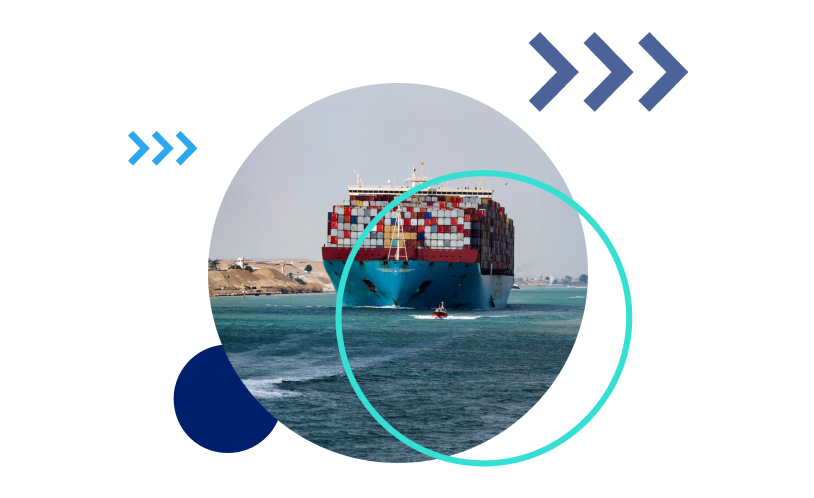Ever seen a kid open their first gift, and play with the gift wrap instead of the gift? Let’s get you as excited about packaging. Sure protecting your shipment is prudent (and boring) but did you know that great packaging can slash costs? Suddenly not so boring, right?
Protect Against Damage And Theft
Safety comes first. So make sure that your packaging is providing the protection required for your shipment. Fragile shipments should be double-boxed. Having two boxes not only adds an extra layer of cushion from…rugged..handling but it also reduces the chances of the product moving when the box is jostled. Wrapping the first box with bubble wrap and peanuts will secure it even further (but watch out, some fulfillment centers, like Amazon FBA warehouses, won’t let you use peanuts).
Unless you have a full container load, your goods will be consolidated with other shipments in a container. Same goes for planes: unless you are Apple chartering entire cargo planes, your goods will be consolidated with other shipments in the hold. With all those shipments huddled together, it’s easy for packages to get mixed up at unloading or. So make sure that your packages are clearly marked. But not too identifiable. If you are shipping something attractive to thieves, you should remove any brand identification or any other labeling that might spill the beans (take a note from this bike company).
Cost-Effective Product Packaging
You’re probably catching on that over-packaging will increase freight costs, and reducing packaging is likely worth the chance of a marginal increase in damages. So time to take it to the next step, because some radical thinking will be required.
Have you ever thought whether you are unnecessarily paying extra freight because of the wasted space caused by the standard packaging that your product comes in? This is something to consider carefully. It isn’t as simple as changing the cardboard box, or the packing material. Your supplier will likely need to make changes to the machinery and make special production runs. Expect that your supplier may not initially be receptive, but if your product is selling like hotcakes, you should do the math. Chances are that you will quickly recoup any set-up costs, and be saving a mint. Amazon has mastered this (and even passes on savings to customers).
Cost-Effective Packaging For Ocean Freight
Cargo ships have a lot more space than airplanes. But have you seen any of those horror pics on the internet showing container ships buckling or lurching because of weight? Well, that’s why weight more than volume drives ocean freight costs. Just as with freight, you still want to reduce gaps between packaged products, and not go overboard (pun intended) on packaging material, but you probably won’t get the same magnitude of cost savings you will get with air freight.
Remember though to stick with standard sized boxes. They fit nicely on pallets. This standardization is what makes it possible for shipments to smoothly move from factory floors onto trucks, and onto ships.
There’s an extra cost with using pallets if you are importing from China. The wood will need special treatment before it can make it into the US. Same goes for some other export countries, and some other import countries too.
Cost-Effective Packaging For Air Freight
There isn’t much space in a plane’s hold. That’s why air freight costs are based on volume more than weight. And that means that your goal is to reduce gaps between packaged products inside the carton, and between other cartons.
Here are some hints to reduce volume.
- Forget pallets – they take up a lot of costly room.
- If your cartons are light, have them packed together wherever possible, and use non-bulging, lightweight but strong packing materials.
- Is the packaging your supplier is recommending the smallest box possible? If not, use an online dimensional weight calculator to see how much extra you may be paying for the larger box. Then you’ll know whether you should be insisting on a smaller box.
Expert Packaging Ideas
So far, the advice has been to pack products closely, use less packaging, and consider changing the product packaging, but how do you do any of this without compromising safety?
And besides, isn’t this going to be detrimental to sales? We all know that impressive packaging helps sells those products, right? In effect, you really have to be an expert to get it right. So here’s a protip – talk to an expert! Contact a packaging company near you for some creative ideas so that your product will still look great, your stock will stay protected during transit, and you will save a bundle on freight costs.
There’s a little more to packaging than meets the eye, but it will be well worth your while taking up on these tips. Like the young child unwrapping it’s first gift, it really is worth the time checking the packaging out.
If you now think packaging is exciting, wait until you try instant freight quoting on Freightos!



